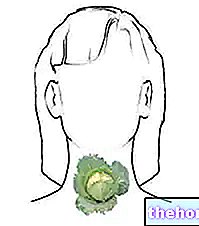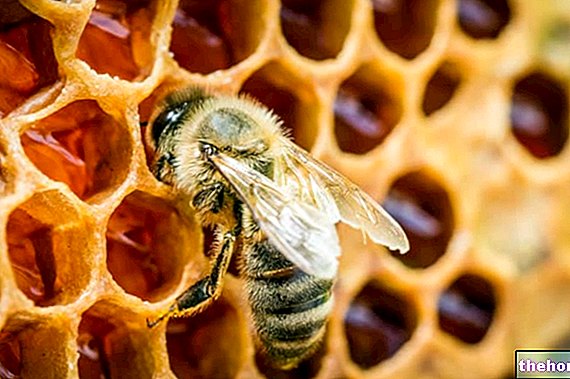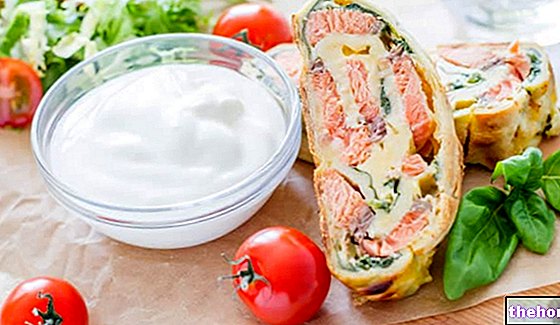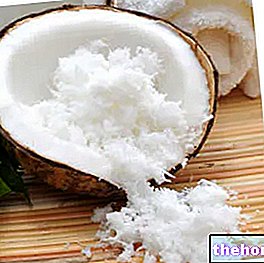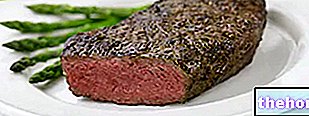What is tofu?
Tofu is one of many food products made from yellow soybeans in an attempt to hold a nutritional comparison with animal protein foods.
It is obtained starting from soy milk, making its proteins coagulate by means of a special natural "rennet". This production process, similar to that used for the production of animal cheese, can be easily replicated at home using lemon juice or magnesium chloride (called nigari) as rennet. The related video recipes are available at the following links:
- Premise: Homemade Soy Milk
- Homemade tofu with citric acid
- Homemade tofu with nigari
Tofu can also be made from hemp seeds, as shown in the video recipe:
- Hemp-fu: Hemp Tofu

Birth and Diffusion
Originally from China, where it is believed to have originated about 2,000 years ago, tofu quickly spread to other countries in the Far East, where it is still a traditional food today.
In place of animal cheese, tofu is the ideal choice in case of:
- Lactose intolerance;
- milk protein allergy;
- digestive difficulties;
- the need to limit the intake of cholesterol and saturated fat in the diet;
- vegan food style;
- low sodium diets;
- weight loss diets;
- menopausal disorders, in the context of a diet that is globally rich in soy and derivatives, supervised by a doctor.
Despite its origins, "tofu" is not a Chinese word, but a Japanese term that means "meat without bones".
For some years now, tofu has also become a constant presence on the shelves of Italian supermarkets, being an ideal substitute for cheese for those who do not tolerate lactose or follow a vegan diet.
It comes in the form of more or less rigid blocks, vacuum-packed and ready to be cut as desired for direct consumption or as an ingredient in more complex recipes.
Natural tofu has an absolutely neutral taste, but there are also flavored variants, such as tofu with olives, mustard or herbs.
Properties and Nutritional Values
See also: Tofu and Miso
Nutritional Benefits
Often referred to as soy cheese, because it is produced in a very similar way to cheese, tofu is cholesterol-free and contains very little saturated fat, of which its animal counterpart is particularly rich.
Consequently, the partial replacement of cheese with tofu contributes not only to preventing hypercholesterolemia and its dangerous consequences, but also to rebalancing plasma lipid concentrations. This effect is also due to the generous presence of polyunsaturated fats and lecithins.

Tofu is also more easily digestible than cheese and, being lactose-free, it can be inserted without problems even in individuals intolerant to milk.
Nutritional values
As shown in the table, the nutritional characteristics can also vary significantly from one commercial tofu to another. This is because, unlike cheeses, there is no strict production disciplinary regulating the production of tofu.
In addition to the degree of dehydration (creamy or compact tofu), the choice of rennet and the possible addition of flavoring ingredients also greatly influence the nutritional values of tofu.
Nutritional composition per 100g
In the section of the site dedicated to the nutritional tables of various foods, it is possible to discover the nutritional values of other types of tofu.
Nutritional deficiencies
Although it represents a valid alternative to foods of animal origin, tofu is still not able to completely replace them.
In fact, tofu is free of vitamin B12 and vitamin D, although fortified products exist on the market to meet the needs of the vegan public.
As far as proteins are concerned, fresh tofu contains similar quantities (slightly lower) than fresh cheeses and about half that of aged cheeses.
The protein quality, on the other hand, is excellent and, according to the most recent reference indices (PDCAAS), it is comparable to that of meat.
The calcium content of tofu can be more or less consistent depending on the "rennet" used to coagulate the soy milk proteins (calcium chloride or sulphate, magnesium chloride); however - although relevant - it is still inferior to animal cheese.
Flavor and preparation
As far as flavor and texture are concerned, classic tofu is a soft "cheese" with a light and particularly delicate flavor.
Thanks to this delicacy on the palate, in the kitchen tofu lends itself to the most diverse culinary combinations (appetizers, snacks, filling for first courses, sandwiches, toast, creams, sauces, soups, roasts, rolls, salads and even desserts). Peculiar is in fact its ability to absorb the flavors and fragrances of the dishes with which it is cooked.
However, there are many varieties of tofu on the market, both in terms of texture, flavor and aroma. All these products can be divided into two categories, fresh tofu, produced directly from soy milk, and preserved tofu, which comes from a "further processing of fresh tofu.
Traditional fresh tofu is obtained by soaking the soybeans for 24 hours, then finely ground with the addition of water. The milky liquid that is obtained from this procedure (see recipe for soy milk) is then curdled (with lemon juice or nigari) and placed in special molds to drain. This is followed by rinsing and pressing into fresh tofu panels ready to be marketed.
Furthermore, from this base it is possible to create preserved tofu, thanks to the use of particular aromas and different production techniques.
What is nigari?
Nigari is a natural coagulant used in the production of tofu starting from soy milk; it is the traditional rennet used for this purpose in the East.
Nigari is obtained from sea salt by evaporation of water and removal of sodium chloride; it is essentially made up of magnesium chloride, with traces of magnesium sulphate and other elements.
The term nigari is of Japanese origin and in the local language derives from a word meaning "bitter". In China it is called instead lushui.
The video recipe to prepare the "original" tofu with nigari is available at this link.
Recipes to prepare Tofu
Whether you are a convinced vegan, a lover of oriental cuisine or simply eager to discover the flavors of this "vegetable cheese", the cuisine of MypersonaltrainerTv is for you: here's how to prepare tofu at home in a few simple steps.
Tofu - How To Make It At Home
Problems with playing the video? Reload the video from youtube.
- Go to the Video Page
- Go to the Video Recipes Section
- Watch the video on youtube
By clicking on the following links, you can discover low-calorie recipes based on tofu, such as vegan wraps, light béchamel, and vegan chocolate mousse.
See also the video recipes Vegan Ricotta - Soy Cheese and other Vegetable Cheeses

